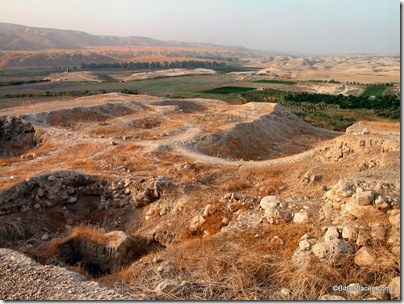In 1967 the University Museum of the University of Pennsylvania filmed a 27-minute movie about archaeological work in Jordan and the West Bank. “The Book and the Spade” gives a general introduction to the value and discipline of archaeology, which includes footage of important biblical sites that are not usually on the itinerary of visitors today, including Hebron, Shechem, and Samaria.
The film naturally focuses more on the excavations sponsored by the University of Pennsylvania, Gibeon and Tell es-Saidiyeh. The latter site is the subject of the second half, and the one who is patient is rewarded with shots of the on-going excavations and an interview with the archaeologist James B. Pritchard. Pritchard is probably best known today for his three editions of Ancient Near Eastern Texts, but he made significant contributions in his excavations of Gibeon (1956-62) and Tell es-Saidiyeh (1964-67). The film also documents the construction of a mudbrick house. Though the movie was slow-moving by today’s standards, I enjoyed seeing many sites the way they were 40 years ago. You can see the contrast of the excavations in the film with a recent photo below.
Other University of Pennsylvania films that may be of interest to readers of this blog include:
Athens (1939)
Ancient Earth: Making History Everlasting (1940)
Iran (1963)
Windows on the Past (1967)
Turkey (1967)
Jordan (1969)
Cyprus (1969)
And more…
HT: Ferrell Jenkins and Gordon Govier
